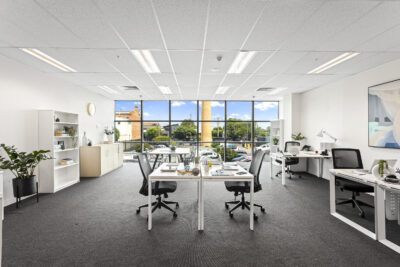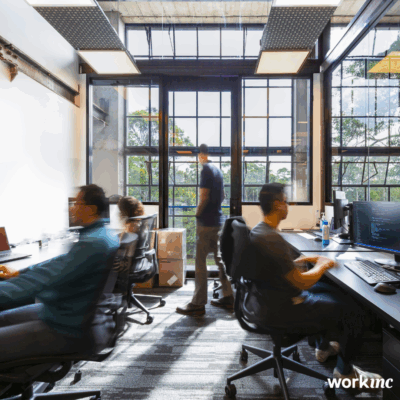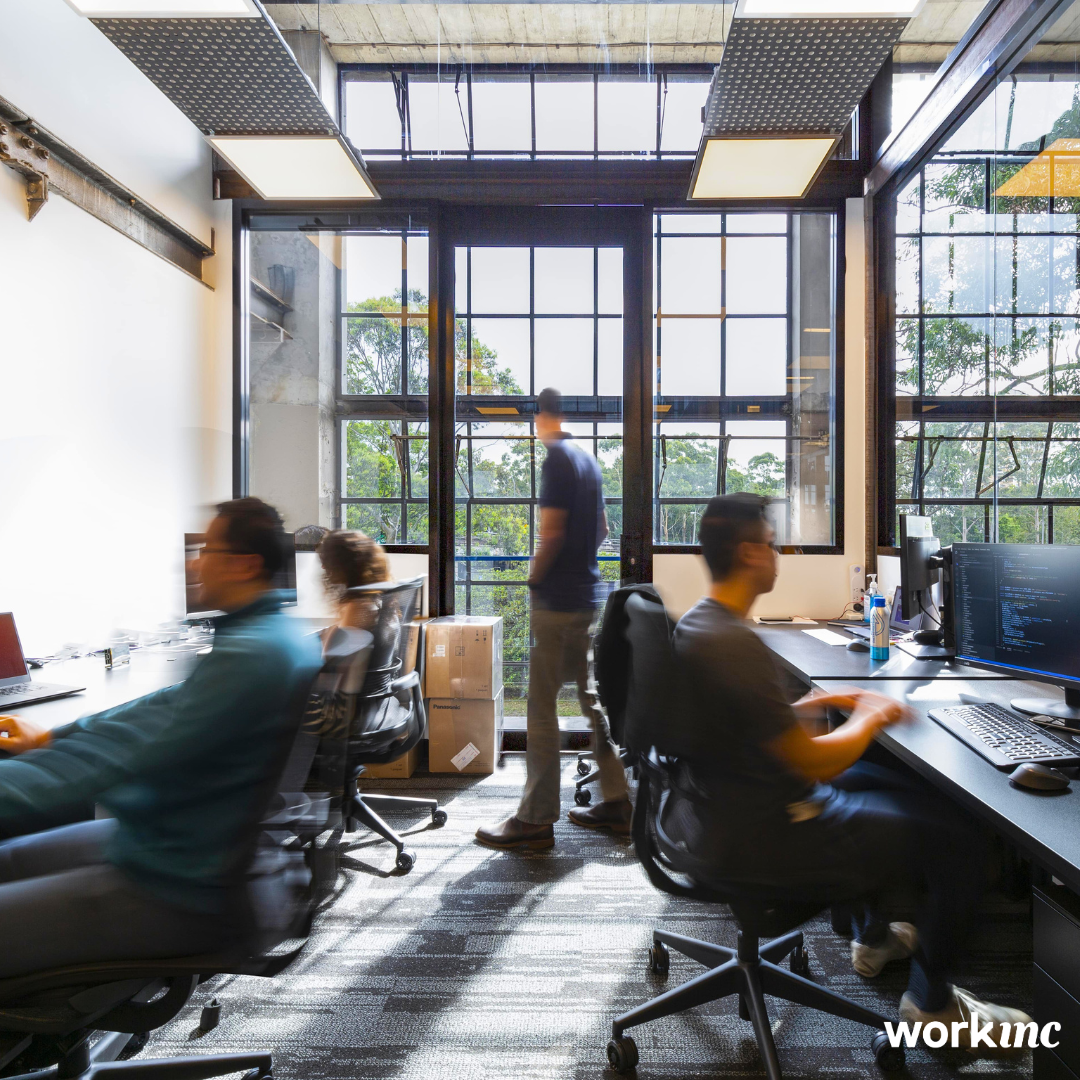
Image source: https://flexfind.com.au/listing/6-middlemiss-street-milsons-point/
Agile working has taken on many meanings over the years, most notably in software development and project management, but it’s now increasingly relevant in how office spaces are designed. An agile work environment is a flexible and adaptive approach to shaping physical space that prioritises collaboration, autonomy, and speed. Unlike the traditional office, where fixed locations and rigid hierarchies dominate, agile working environments support a wide range of working styles. This can be seen in the inclusion of hot desks, breakout areas, quiet zones, and meeting spaces that allow people to choose the setting that best suits the task at hand. These layouts are designed with the belief that flexibility fuels productivity, encourages team collaboration, and ultimately enhances customer satisfaction.
How Agile Working Supports Modern Teams
Many organisations are adopting agile working as part of their shift toward more responsive and human-centred work environments. Agile workplaces offer employees greater autonomy, allowing workers to choose when and where they work. This includes remote options, hot desks, and quiet zones for deep focus, alongside breakout spaces for collaboration and informal meetings.
This model aligns with activity based working principles, where different tasks require different settings. From quiet spaces for concentration to open zones for brainstorming, agile workspaces give teams the flexibility to perform at their best.
Core Principles Behind the Agile Approach
The concept of agile working borrows inspiration from the Agile Manifesto in software development, which values people, collaboration, and adaptability over rigid processes and documentation. In the context of office environments, this translates to designing flexible spaces and empowering teams to communicate and respond to change more effectively. Agile methodology supports adaptive planning, open communication, and continuous improvement.
The Benefits of Agile Working
There are many benefits of agile working for both employees and organisations. First, it boosts productivity by supporting a wider variety of working styles. It enhances work-life balance by giving staff more control over their schedule and environment. It also fosters stronger company culture by encouraging collaboration, transparency, and shared ownership of outcomes.
By integrating flexible working options and allowing employees to choose from different work settings, companies can reduce real estate costs while improving performance.
Elements of an Agile Working Environment
To successfully support agile ways of working, the physical workspace must provide the right balance of structure and flexibility. The layout below reflects how key zones within an office can enable various agile workflows; from focus work and deep collaboration to social interaction and onboarding.
Central Collaboration Hub
At the core of the workspace is the Central Collaboration Hub. An open, easily accessible area that anchors the entire floor. This space supports stand-ups, quick syncs, and group discussions, encouraging spontaneous collaboration. It’s designed to be a convergence point where cross-functional teams can easily interact without the need for scheduled meetings.
Active Collaboration Zones
Positioned around the perimeter are Active Collaboration areas. These zones are built for high-energy teamwork and co-creation, often furnished with adaptable seating, writable surfaces, and mobile screens. They’re ideal for sprint planning, workshops, and impromptu problem-solving—core activities in agile delivery.
Meeting Rooms
Formal meeting rooms offer structure and privacy when needed. Whether it’s for sprint reviews, retrospectives, or stakeholder presentations. These spaces support deeper conversations without interrupting the open flow of the wider office.
Social and Informal Meeting Areas
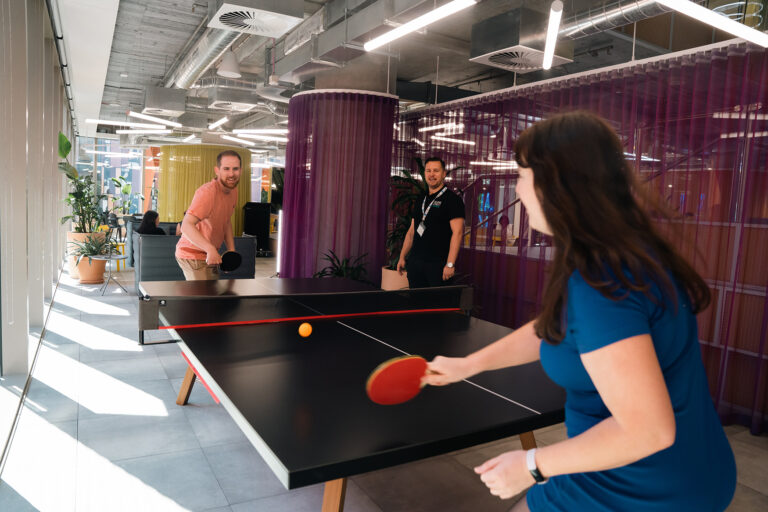
Image source: https://flexfind.com.au/listing/700-swanston-street-carlton/
Agile work relies on frequent, casual interactions. The inclusion of Social zones and informal meeting spots gives teams a place to connect organically. These spaces are essential for building trust, sharing knowledge, and fostering team culture; all without the rigidity of scheduled collaboration.
Focus Work Area
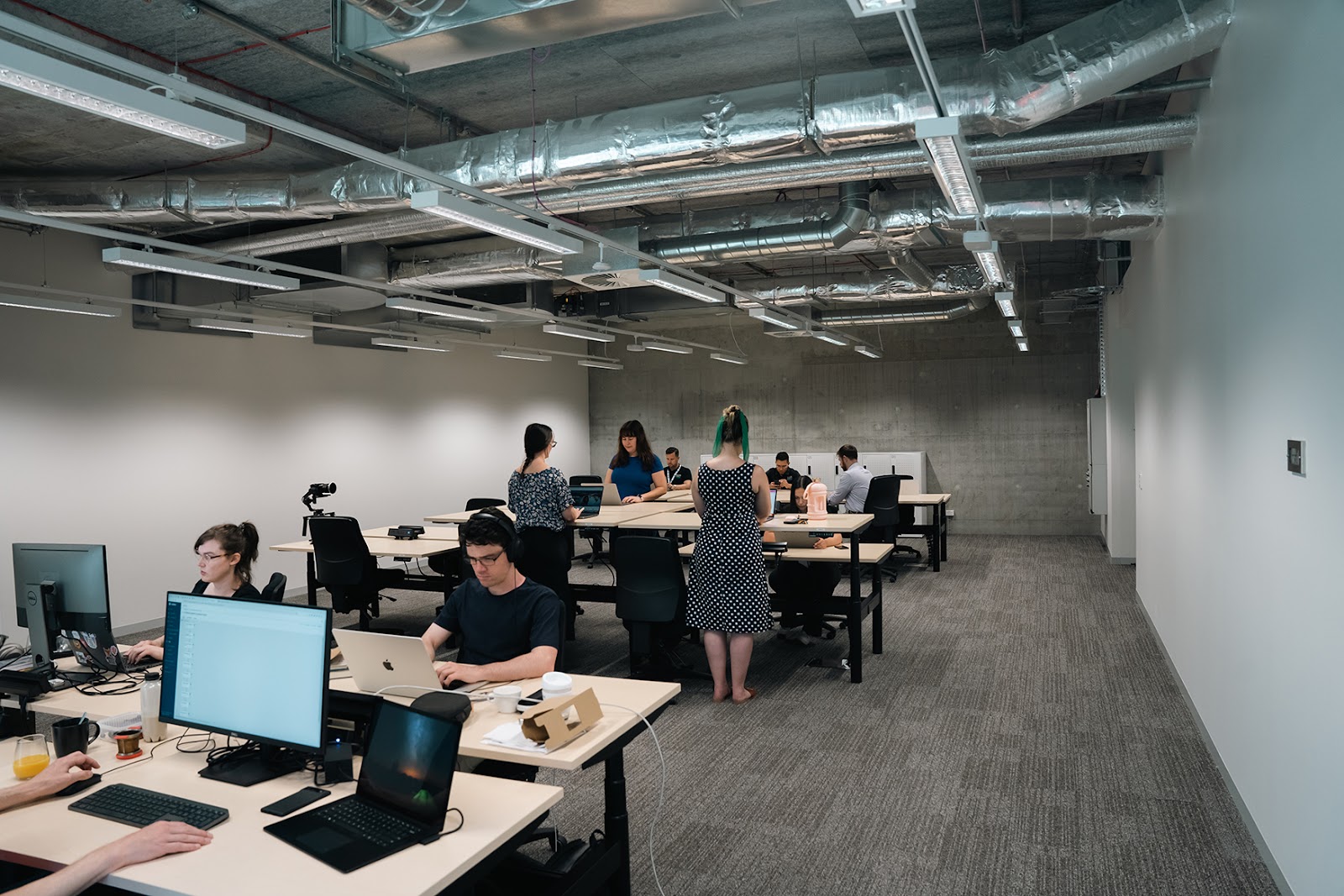
Image source: https://flexfind.com.au/listing/700-swanston-street-carlton/
While collaboration is central to agile, focused individual work is just as critical. The Focus Work area is designed to support deep concentration, with reduced noise, minimal distractions, and ergonomic seating. This enables team members to work independently when needed, such as during backlog refinement or preparing documentation.
Training and Onboarding Area
Agile teams evolve constantly, and effective onboarding is key to maintaining momentum. A dedicated Train/Onboard zone provides new hires or rotating team members with the space and resources they need to get up to speed quickly—aligned with the agile principle of building capable, cross-functional teams.
Wellness and Recharge Spaces
Sustainable agility requires looking after the well-being of your people. The inclusion of wellness areas—whether for quiet reflection, stretching, or mental reset—ensures the environment doesn’t just drive productivity, but also resilience. A well-supported team is one that can continuously deliver at a high level.
Designing the Agile Workspace
An effective agile workspace blends form and function. Key features include:
- Flexible work zones (e.g., breakout spaces, meeting rooms, and quiet zones)
- Shared areas for ad hoc collaboration
- Informal meeting areas to encourage open communication
- Office layouts designed around team flow rather than static departments
The physical workspace should support the same agility and adaptability expected of the teams using it. From informal meeting areas to quiet zones and flexible seating, an agile environment should make spontaneous collaboration and quick decision-making easy and natural.
Agile Office Design and Company Performance
The agile workplace doesn’t just look different, it enables teams to work differently. Agile working reduces delays, encourages faster decision-making, and fosters open communication across departments. By providing flexible office spaces and the right tools, businesses can adapt quickly to change, support team collaboration, and deliver better outcomes for clients.
As more organisations move away from traditional office setups, flexible office environments that support agile working are becoming the norm, not the exception. Embracing this approach means designing a workspace that reflects the values of flexibility, adaptability, and human-centered productivity, not just updating processes, but rethinking how the entire work environment supports people and performance.
